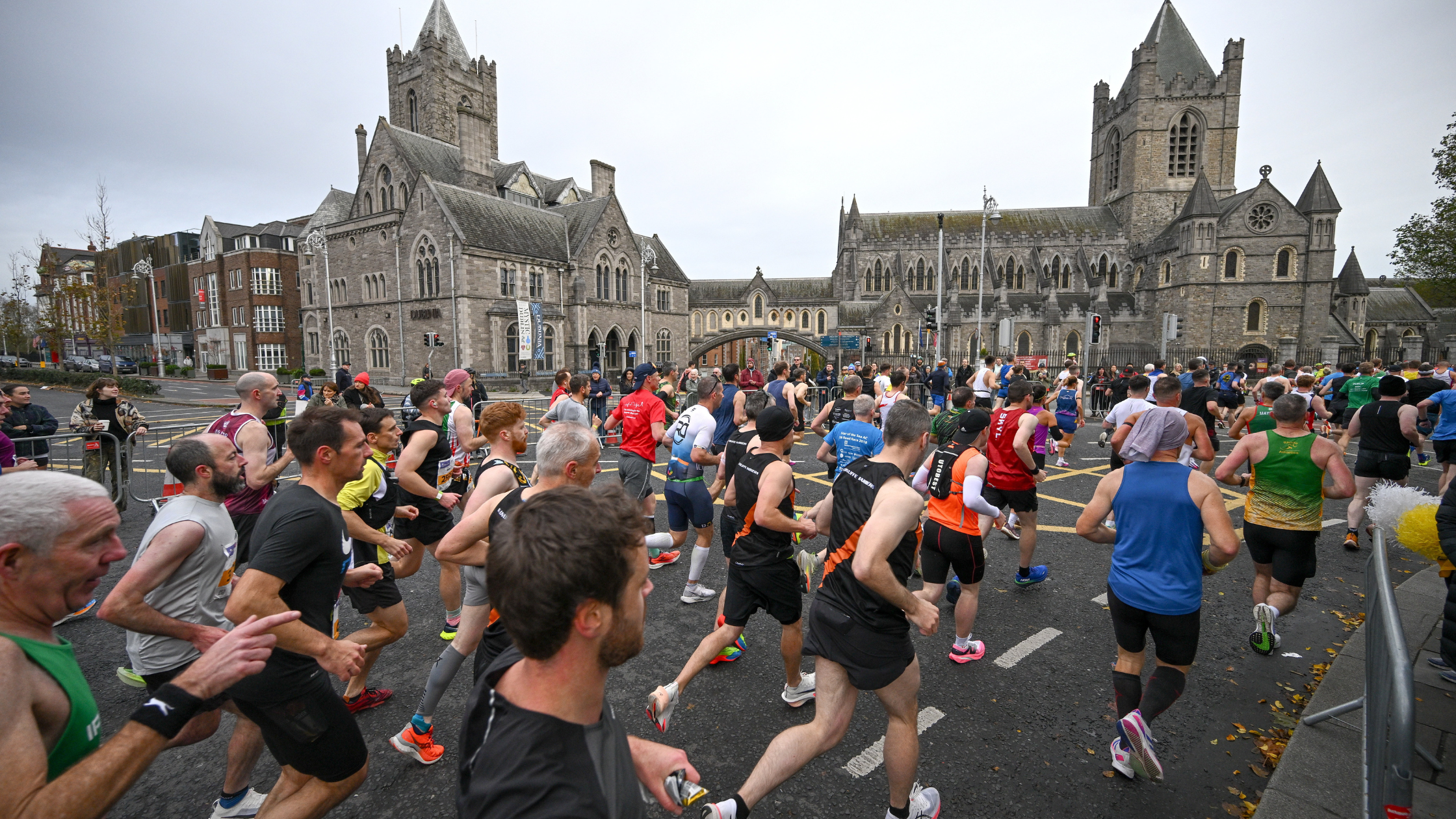The most difficult part of any running training programme is to be in the best possible shape when you reach your event. Not only do you need to ensure that your running peaks at the right time, but you also need to taper to arrive fully recovered, fresh and without any feelings of fatigue.
Too many runners tend to work too hard in training during the two to three weeks prior to competition; doing too many miles or kilometers, or too many repetitions, or training at too high an intensity, either in their training runs or during their repetitions sessions, without the correct recovery.
In fact, all that you should be doing is easing back so that you are ready for the chosen competition. You need to reduce your training volume (taper) to achieve full recovery. Here's a closer look at the key factors for full recovery in the taper:
Muscle damage
If you're not sure if you as a runner should taper in the weeks before a race, then read on. By reducing training and in particular long or intense speed training sessions, you will arrive at your event with fresh legs.
By reducing training and in particular long or intense speed training sessions, you will arrive at your event with fresh legs.
Quite often marathoners and half marathoners find that it is their legs that give out in the latter part of a race. Starting with muscle soreness or muscle fatigue will increase the risk.
Fatigue
By fatigue we mean general fatigue from lots of hard training over a prolonged period (ten weeks plus). A proper taper will give you some mental drive, a very necessary component to ensure that you can focus on your event and push hard in the closing stages.
Your central nervous system needs several days of light training as a minimum and the longer your build up the longer the taper needs to be to remove this. One way to do this without getting lethargic is to do wind sprints in the final few days. These are short efforts at or faster than your projected race intensity (PRI).
Carbohydrate stores
Need convincing that runner's should taper in the weeks before a race? Well, your body can only store a limited amount of carbohydrate in muscle (600g or so) and your final week should focus on maximising this. You therefore need to ensure that you do keep eating well. But you can overdo it.
Your body can only store a limited amount of carbohydrate in muscle (600g or so) and your final week should focus on maximising this.
If you have been training hard you will be eating more food than usual, so when you reduce your training in the taper, most athletes would be advised to keep their energy stores up by keeping the same eating patterns. This also follows the age old rule of not changing anything close to your event. By also timing your meals immediately (no more than 30 minutes) after your training, you will also ensure that you store less of your food as body fat and more as muscle glycogen, which is good general training advice anyway.
Maintaining performance components
While you are reducing your training so that you are fully recovered, you will need to ensure that you maintain all the adaptations from your training. These adaptations have been hard earned so you want to hold onto them. The key areas are cardiovascular endurance, muscular endurance, cardiovascular speed, and muscular (leg) speed.
Cardiovascular (aerobic) endurance
Many of the adaptations to endurance training are rather permanent things like red blood cell numbers, the oxygen carrying molecule haemoglobin, blood capillary density in muscles and muscles cell mitochondria and oxygen carrying myoglobin don’t change rapidly. That’s good news if you want to cut back your training and freshen up.
By reducing your training volume to a third of your highest level you can maintain your cardiovascular fitness for around eight weeks.
So this explains why you can do your last long run as much as a month before a marathon. You body still maintains the benefit for up to 30 days. The key point here is that you should never be afraid to back off your long run. By reducing your training volume to a third of your highest level you can maintain your cardiovascular fitness for around eight weeks.
Cardiovascular speed
Your taper must include speed work , but reduce this to limit muscle damage. If you have run a time trial of about 50 per cent of race distance two weeks before your event, you will need to do something hard eight days before, of around 25 per cent of race distance. This would be your last hard session. So for a good marathon runner this would be 5 x 2k at PRI.
Six days prior to the event, remind your body with some shorter intervals, for example; 4 x 400m. You want to do just enough to maintain. Listening to your body and knowing when to quit a session is also important. Ask “is another repetition going to make me faster on race day.” If not, warm down and go home.
Muscular endurance
If you are properly rested and have maximised your energy stores and energy usage, the next potential slow down in a marathon is muscle endurance. Put simply, your legs die. Your taper needs to carefully ensure that you maintain these adaptations. You do need to do something of about a third your maximal muscle endurance around ten days out but also another smaller amount six days or so out.
For the ten days out from a marathon, a workout of 60 minutes including 50 per cent hills and several hill repetitions (say 8 x 400m) at PRI is key. Do this on grass to reduce muscle damage. This workout should feel mildly taxing on the legs but relatively easy in terms of available energy and cardiovascular effort.
Muscular (leg) speed
Leg speed seems to decrease rapidly. Even after one day off from exercise you feel sluggish and your ability to turn your legs over fast can drop. To combat this you need to include wind sprints; these are 1-200m repetitions at PRI or slightly faster. Because you lose leg speed rapidly, do something on the day before your marathon. There is nothing worse than taking most of the event to get going. A short session building up to your PRI on the day before is also good for your nerves.
Monitor your state of readiness
It is not uncommon for athletes to become sick during the taper. To avoid this, monitor how you feel. If you feel lethargic this is a sign that you need to do some speed; even 2 x 200m at your half marathon pace can be enough to wake your body up. As you will be able to see, the suggested taper includes some faster training on every day except the day two days out.
Individual variation in taper
Some athletes need more training than others when it comes to the final few days. If you need more training to avoid becoming sluggish, be careful that you don’t end up with tired legs and depleted energy stores. Keep on the grass and top up your energy stores as you go.
Therapy and stretching
Many athletes get a massage in the week before their goal event. Avoid this if you don’t get a regular massage, or keep it very light. Alternatively, contrast water therapy is where you take a hot shower or use a spa or hot bath and follow this with a cold shower, or plunge pool. Three to four sessions for seven minutes hot and two minutes cold works well and can really make you feel alive. Finally stretching; the rule is, before exercise use active stretching and after exercise use passive stretching.















